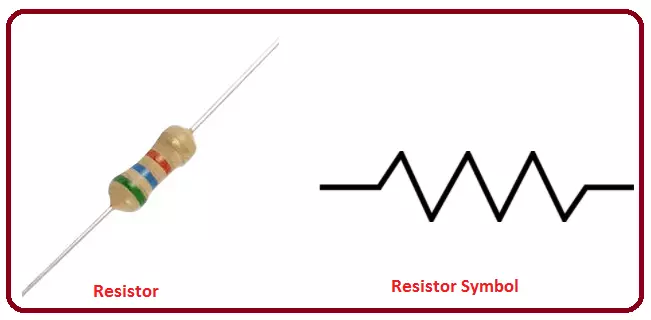
Resistors are one of the most fundamental components in electronics, playing a crucial role in controlling the flow of electric current. Whether you’re a beginner or an experienced hobbyist, understanding resistors is essential for building and troubleshooting electronic circuits. In this article, we’ll explore what resistors are, how they work, their types, applications, and key concepts to help you master their use.
A resistor is a passive electrical component that limits or regulates the flow of electric current in a circuit. It does this by providing resistance, which is measured in ohms (Ω). Resistors are used to control voltage levels, limit current, and divide voltages in electronic circuits.
In circuit diagrams, resistors are represented by a zigzag line (in the US) or a rectangular box (in Europe). Their primary purpose is to ensure that other components in the circuit receive the correct voltage and current.
Resistors work based on Ohm’s Law, which states that the voltage (V) across a resistor is equal to the current (I) flowing through it multiplied by its resistance (R):
V = I × R
Limiting Current: By adding resistance, a resistor reduces the amount of current flowing through a circuit. For example, resistors are often used to protect LEDs from burning out by limiting the current.
Dividing Voltage: Resistors can create voltage drops, allowing specific parts of a circuit to receive the desired voltage.
Energy Dissipation: Resistors convert electrical energy into heat, which is why they often warm up during operation.
Resistors come in various types, each suited for specific applications:
Carbon Film Resistors: Affordable and widely used, with moderate accuracy.
Metal Film Resistors: More precise and stable than carbon film resistors.
Wirewound Resistors: Designed for high-power applications, offering high precision.
Potentiometers: Adjustable resistors used for controlling voltage (e.g., volume knobs).
Rheostats: Used to adjust current in a circuit.
Thermistors: Resistance changes with temperature.
Light-Dependent Resistors (LDRs): Resistance varies with light intensity.
Varistors: Protect circuits from voltage spikes by changing resistance with voltage.
Most fixed resistors use a color code system to indicate their resistance value and tolerance. Here’s how to read it:
Bands: Resistors have 4–6 colored bands.
First Few Bands: Represent the significant digits of the resistance value.
Multiplier Band: Indicates the number of zeros to add.
Tolerance Band: Shows the allowable variation in resistance (e.g., ±5%).
Example: A resistor with bands Yellow, Violet, Red, and Gold has a value of 4,700 Ω (4.7 kΩ) with a ±5% tolerance.
Resistors are used in countless ways, including:
Current Limiting: Protecting LEDs or other components from excessive current.
Voltage Division: Creating reference voltages in circuits.
Pull-up/Pull-down Resistors: Ensuring stable logic levels in digital circuits.
Timing Circuits: Used with capacitors in RC circuits to control timing (e.g., in blinkers or timers).
Power Rating: Resistors have a maximum power they can handle (in watts). Exceeding this can cause overheating or failure.
Series and Parallel Configurations:
In series, resistances add up: R_total = R1 + R2 + …
In parallel, the total resistance decreases: 1/R_total = 1/R1 + 1/R2 + …
Equivalent Resistance: Simplifying complex resistor networks for easier analysis.
Overheating: Always check the power rating and ensure it matches the circuit’s requirements.
Misreading Color Codes: Use a multimeter to verify resistance values if unsure.
Choosing the Right Type: Select resistors based on the application (e.g., precision, power handling, or environmental conditions).
Historical Background: The first resistors were made in the 19th century using materials like carbon and wire.
Miniaturization: Modern resistors can be as small as a grain of sand, enabling compact electronics.
Everyday Use: Resistors are found in almost every electronic device, from smartphones to refrigerators.
Resistors are indispensable in electronics, serving as the building blocks for controlling current and voltage. By understanding their types, applications, and key concepts, you can design and troubleshoot circuits more effectively. Don’t be afraid to experiment with resistors—they’re a great way to learn and innovate in electronics!